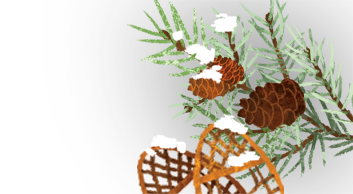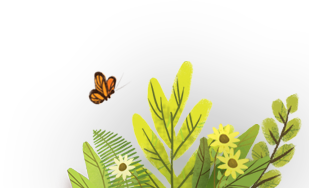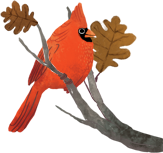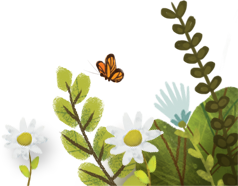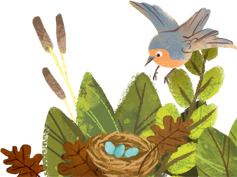- BEFORE coming to Quarry Hill, students should practice sketching and measuring.
- This class is entirely inside so students don’t need to wear snow pants and boots for this class.
- Bring students’ science notebooks for the drawing portion of the class.
- OPTIONAL: Teachers may want to bring a digital camera to photograph the animals we will be sketching.
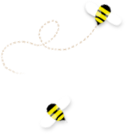
Examining Life
| Title | Examining Life |
| Audience | 1st Grade |
| Offered | December - Mid January |
| Length | 1 hr. 25 minute (look-around time in the exploration hall included) |
Preparing for this Class
Class Description
Students will participate in animal puppet shows as puppeteers and audience members. These puppet shows provide a brief overview of a featured animal’s life cycle and the role of the seasons in its life cycle. After this introduction to animal life, students will do 2 activities:
- Study 3 live animals: snails, fish, and beetles by carefully observing, measuring and sketching the animals using a 1 cm grid (either in their own science notebook or on a sheet provided at the nature center).
- Do a matching activity in the Exploration Hall, pairing pictures of baby animals with their adult form. Students will also have time in the Exploration Hall to use their scientific observation skills as they explore on their own.
Correlation to MN Science Standards
- Recognize that describing things as accurately as possible is important in science because it enables people to compare their observations with those of others. (1.1.1.1.2)
- Demonstrate an understanding that animals pass through life cycles that include a beginning, development into adults, reproduction and eventually death. (1.4.3.1.1)
- Recognize that animals pass through the same life stages as their parents. (1.4.3.1.2)
Science Vocabulary
|
*Vertebrate Abdomen Animal Features Ruler Head |
*Invertebrate Insect Thorax Shape Color |
Observe Antennae Gill cover Size Parent/Offspring |
*denotes a Quarry Hill vocabulary word



